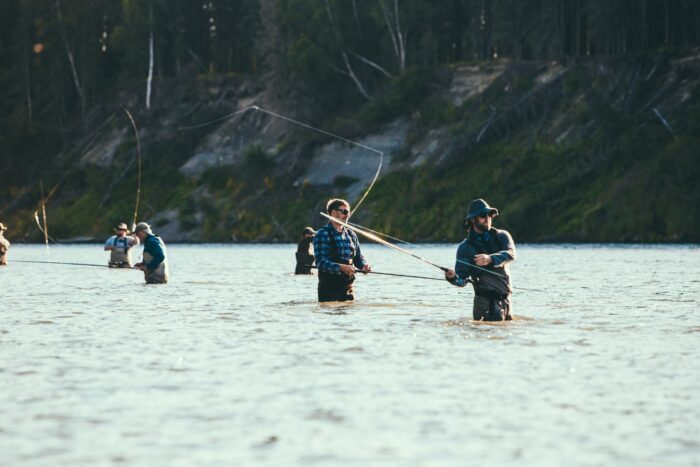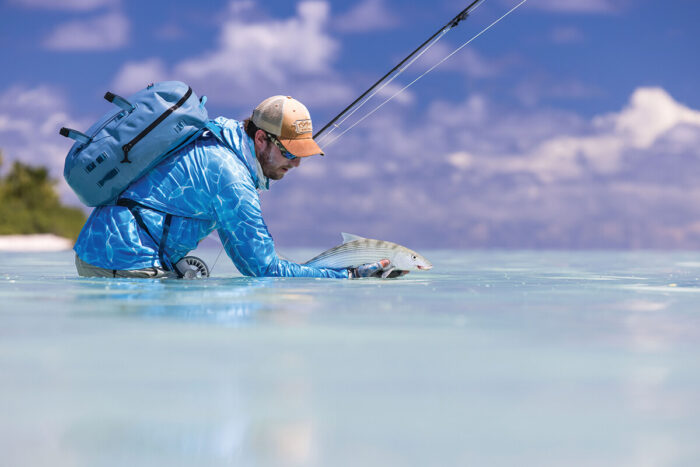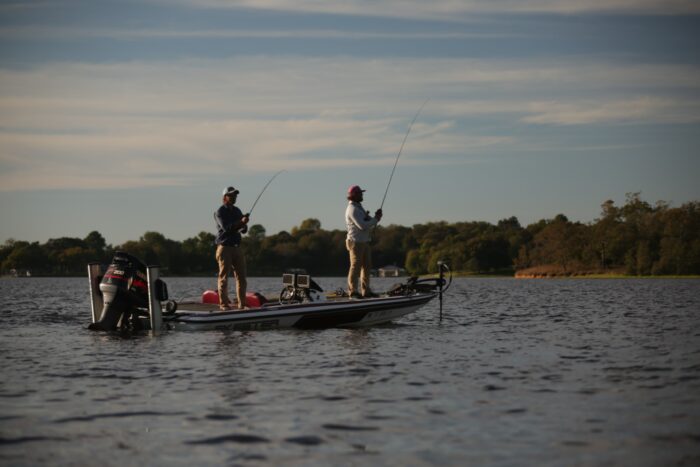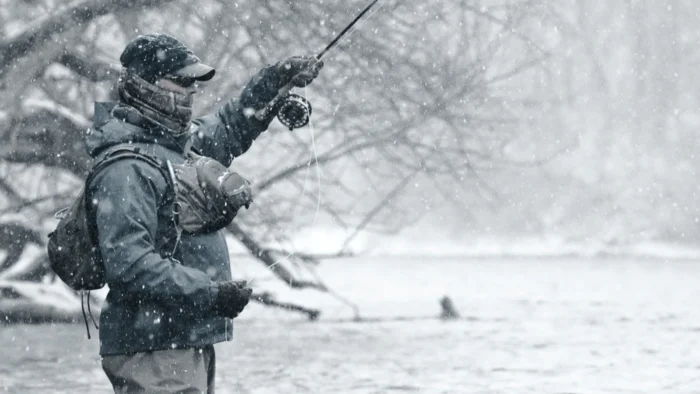Outdoor activities always require your clothing to perform at a higher level, providing comfort, protection, and utility. Fishing is no exception. Many beginners make a huge mistake thinking that the right fishing gear is the only aspect that promotes success, completely forgetting about picking clothing.
Your fishing outfit directly impacts your performance. Wearing improper clothing, you’ll be distracted by inconveniences caused by the sun burning your skin and messing up with your eyes, wet pants and shirts sticking to your body, and boots slipping on rocks and branches. Clothing designed accounting for all factors anglers face on their trips promotes concentration.
To improve your experience, Gritr Outdoors gladly shares some tips on what to wear fishing and how to choose the best fishing clothing. Let’s dive in.
Fishing Clothes Basics

Source: unsplash.com
Whether you are into shore fishing or boat fishing, the basics stay the same. When choosing fishing apparel, three things should guide you: Comfort, Protection, and Concealment. You should always keep them in mind.
If you engage in other outdoor activities like hunting or backpacking, you may already know some tricks that will be of value when fishing, such as layering.
For most environments and weather conditions, a three-layer clothing system will work just fine. The temperature changes naturally at dusk and dawn and can change dramatically during the day due to the weather events. Finally, the weather changes during the year. A layering system helps you adapt to temperature drops and rises.
Typically, such a system consists of a base, middle, and top layer. All three layers will keep you warm in cold climates, while a combination of a base and a middle layer will provide comfort in milder weather conditions. In hot environments, wearing just a base layer can be sufficient. Let’s enlarge on each layer.
-
Base Layer
You want your base layer shirt to be breathable and moisture-wicking. Such materials as polyester, merino wool, and nylon dry quickly, removing sweat from the body and keeping you warm and comfortable. Stay away from 100% cotton shirts. Yes, they feel nice but absorb moisture like hell and dry long. If you want cotton that much, look for polyester-cotton blends.
-
Middle Layer
This layer is multifunctional, providing additional insulation in winter or protection against the sun, wind, or environmental elements in warmer climates. Long-sleeved garments are recommended due to their versatility. Again, prioritize breathability and quick-dry properties. If you plan to wear your middle layer as outer clothing from time to time, waterproof and windproof shirts make more sense.
-
Top Layer
Denim and other fabrics used to make casual clothing are out because they can’t resist water and dry forever. Once wet, casual garments gain weight and stick to your body. Fishing jackets and pants should be waterproof, quick-drying, lightweight, and provide freedom of movement. It’s also nice if your top-layer clothes have plenty of pockets to keep your first-necessity fishing gear.
As far as concealment goes, pick clothes of natural colors that allow you to blend with the background. Imagine yourself a fish looking at the water surface from the bottom. What do you see? If you see vegetation, then hushed greens and browns will work. And if only clear sky or clouds come into view, then go with blues and grays.
-
Footwear
Fishing-suitable shoes range from sandals to boots, and you can choose whatever you like based on the weather and type of fishing. Pay close attention to the sole. Most non-slip fishing boots have either rubber or felt soles. We strongly recommend you avoid felt soles. First of all, they are banned in some states. The reason is that felt attracts various microorganisms, some of which can damage the ecosystem of a water body. These unfriendly microorganisms are called Aquatic Nuisance Species. The other cons of felt boots include decreased out-of-water performance and reduced durability.
Other Fishing Accessories

Source: flyfisherman.com
Headwear, gloves, and sunglasses are essential gear because they protect you against sunlight and heat during long hours of fishing. They not only make you more comfortable and concentrated but prevent harm to your health.
Lightweight wide-brimmed hats are the best option because they not only cover your head but also protect your neck from sunburns. Some anglers prefer ball caps paired with hoods or buffs that cover practically all of your face.
Wearing gloves in hot weather seems weird. However, if you want hand protection, they are a must-have. Special fishing gloves are lightweight, and some of them are fingerless designs not to compromise tackle handling.
While you may think any sunglasses do the trick, polarized sunglasses will offer more perks. Polarized lenses not just protect your eyes but reduce glaze significantly and allow you to see deeper under the water surface.
These were the basics. Now let’s talk about fishing clothes more specifically.

Source: unsplash.com
Warm Weather Fishing Clothes – Spring and Summer
-
Shore Fishing
For shore fishing, you may need a pair of waders. There are three waders designs. Hip waders cover only your legs like stockings and are helpful when fishing in shallow waters. Waist waders look like pants and suit anglers who go waist-deep into the water. Chest waders ensure maximum coverage up to the armpits and are great for deep waters. Neoprene waders tend to be more durable and warmer, while nylon and PVC waders are more lightweight and flexible.
-
Boat Fishing
Choose breathable clothing with a UPF (Ultraviolet Protection Factor) of 40-50+. The factor measures how well fabrics absorb ultraviolet light. UPF 50 means that 1/50 (2%) of UV radiation is allowed through the fabric.
Wear a quick-dry long-sleeve base-layer shirt and shorts (use sunscreen) in really hot weather. In mild weather, you may want to wear a base-layer shirt paired with a long-sleeve middle layer and waterproof pants.

Source: feedercreekfish.com
Cold Weather Fishing Clothes – Fall and Winter
-
Shore Fishing
If you plan to go into the water, get thick, well-insulated neoprene waders with boots and wear two layers of socks. Polyester socks can be your base layer to wick sweat away, whereas merino wool socks can serve as an outer insulation layer.
All problems start with cold and wet feet. If you plan to fish from the bank, buy waterproof, insulated boots for your cold-weather fishing adventures. Wear fleece or wool long underwear with waterproof pants.
Protect your upper body with three layers of clothing. Wind-deflecting membranes provide more comfort.
-
Boat Fishing
The boat fishing clothing system is very similar to clothes used for winter shore fishing. You need a quick-drying base layer, a warm and breathable middle layer, and a waterproof, windproof, and well-insulated shell layer.
Conclusion
Before building your clothing system, check fishing clothing brands and outdoor sports stores. Fishing brands are more likely to carry everything mentioned in the article, from women’s and men’s fishing shirts to fishing buffs and sunglasses.
We hope this guide on the best clothing for fishing will be helpful to both beginners and experts. Good luck on your future adventures!
